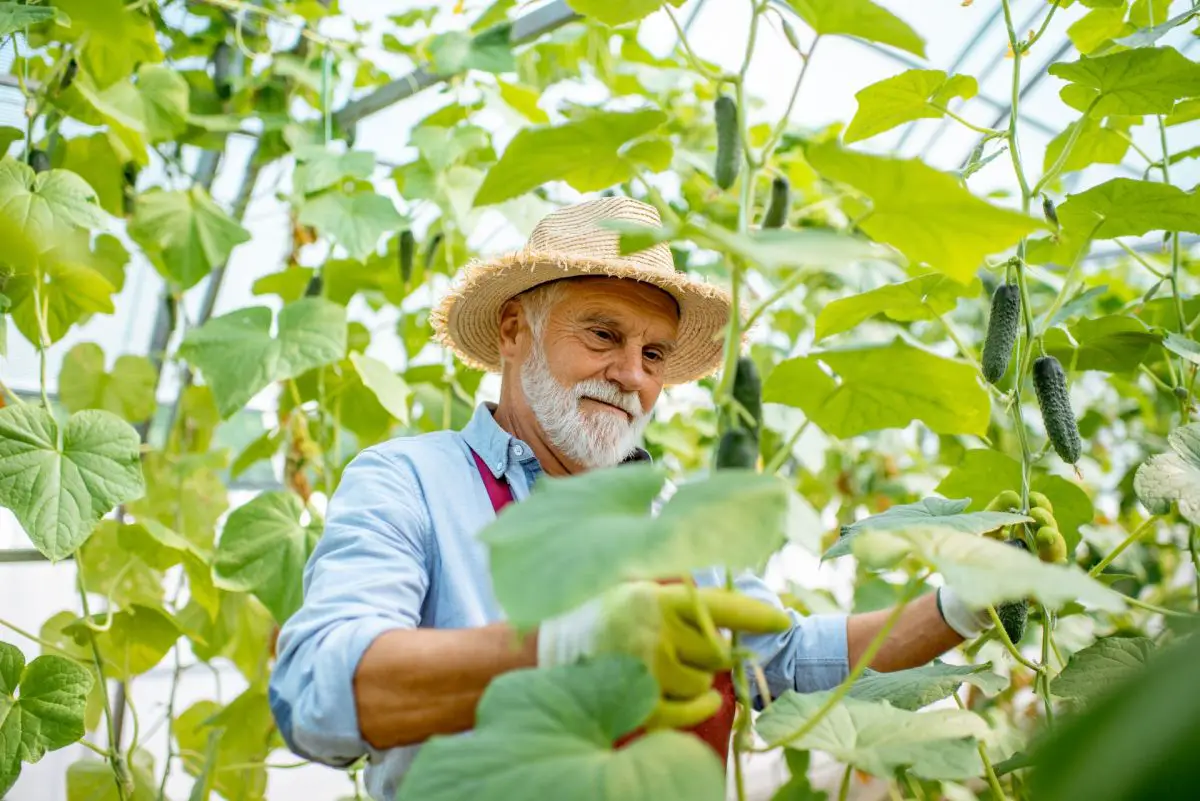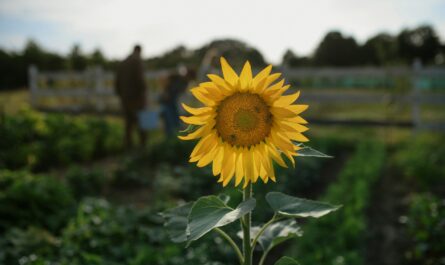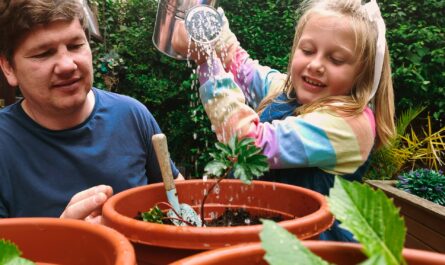Gardening is a unique mixture of being both an art and a science; it is satisfying and enjoyable, allowing people to turn their spare space into gardens and vegetable patches. We will offer a quick breakdown of starting a vegetable garden in Michigan, from selecting the right spot to planting and maintaining your crops for a bountiful harvest.
Vegetable patches are used for growing vegetables, and successful gardeners have to plan and conduct thorough research to be able to start a garden well. You need to have indoor and outdoor plant care guides to ensure you are setting yourself up for success.
Vegetable gardens offer you the opportunity to save money on your fruit and veg but also to enjoy food that is much richer in nutrients.
What We Will Cover
Planning A Vegetable Garden In Michigan
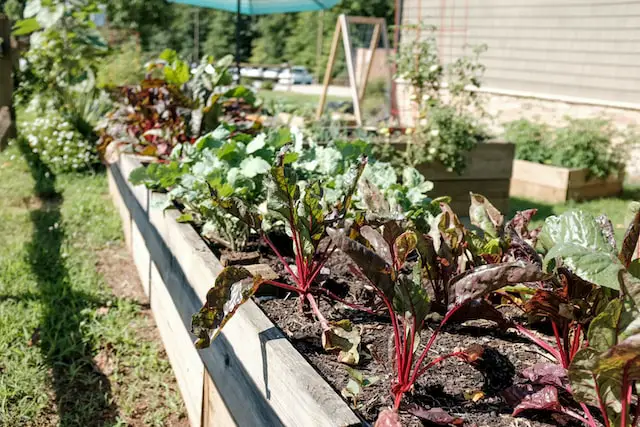
Planning a vegetable garden in Michigan requires careful consideration of the region’s unique climate and growing conditions. To ensure optimal growth, start by selecting a site with well-draining soil and at least 6 to 8 hours of daily sunlight. Michigan’s cold winters and shorter growing season means that utilizing frost-resistant crops and starting seeds indoors can be advantageous.
Consult a local planting calendar to determine the best time to sow seeds and transplant seedlings outdoors. Choose a diverse mix of plants that thrive in the area, such as tomatoes, peppers, beans, peas, and root vegetables. Utilize companion planting techniques to boost yields, improve soil health, and deter pests naturally. To conserve water, consider incorporating mulching and drip irrigation methods. Lastly, regular maintenance, including weeding, pruning, and fertilizing, will help create a thriving and bountiful vegetable garden in Michigan.
Thinking ahead is so important in gardening; you need to know what you are dealing with and understand how to start your vegetable patch to ensure success.
Know Where Your Patch Will Be
First, you need to think about placement, and it is not as simple as just picking out a spot that looks good. Consider what you will grow, the access to sunlight, how much shade your plants will get, pests, birds, and so on.
Figuring out if your patch placement is ideal will help you ensure your plants grow healthy. Note how long the patch gets full, partial, and flecked sunlight. Check every hour.
You should also consider rainfall and frosty weather conditions and how the location and vegetables are chosen will be fair.
Establish The Groundwork
Consider how you will clear the space for your vegetable patch, you will need to clear the space of any unnecessary vegetation and remove any lawn, stones, and weeds.
Then get the correct tools to lay the foundation; you may need the following:
- Steel bow rake.
- Hoe.
- Shovel.
- Watering Can.
You may also need other items too.
How To Create A Vegetable Garden
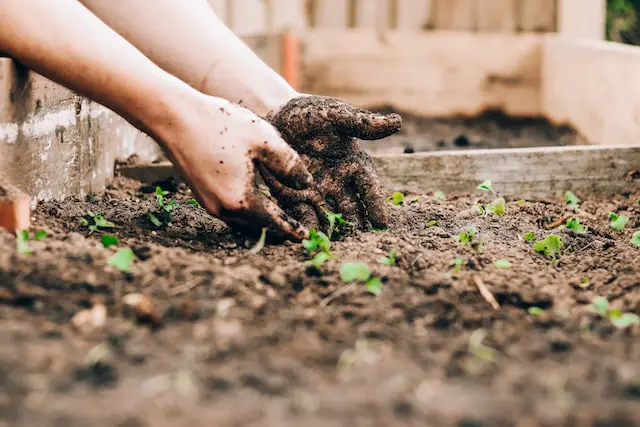
As a Michigan homeowner, creating a thriving vegetable garden in your backyard is enjoyable and rewarding. Plan your garden layout carefully, considering factors like plant spacing, crop rotation, and companion planting to maximize yield and deter pests naturally. Start seeds indoors or purchase seedlings from a local nursery, ensuring they are well-suited for Michigan’s climate and shorter growing seasons. Pay close attention to local frost dates, planting cool-season crops like lettuce and peas early in the spring and warm-season crops like tomatoes and peppers once the danger of frost has passed. Regular maintenance, including watering, weeding, and fertilizing, is essential to keep your vegetable garden healthy and productive throughout the growing season.
Starting a vegetable garden can seem challenging, but it can be very manageable if you get things planned out beforehand. Here are some things to focus on and think about.
Dig Down Deep
Mark the location where your garden will be, and then give the area a good digging to break up the soil, this will help to break up any bits of weed roots or stems. Use a shovel, garden fork, crowbar, hoe, or mattock to dig out the stones and ensure you have enough space.
Begin by choosing a sunny location that receives at least 6 to 8 hours of direct sunlight daily, as this is essential for the growth and productivity of most vegetables. Prepare the soil by tilling it to a depth of 12 inches and amending it with organic matter such as compost or aged manure to improve drainage, structure, and fertility.
If you plan to create a raised vegetable patch, this is still worth doing. If you don’t have good soil take a look at our extensive guide to straw bail gardening. It’s a wonderful alternative, and will the straw bails will last for years.
Add In Compost
While you may have decent enough soil, you still want to add some compost, your garden requires organic material to help it be extra fertile. Interacting with a vegetable garden planner can help you to learn things about why adding compost is so beneficial.
Here are some of the benefits:
- Helps energize the soil in the garden.
- Decomposed organic materials will add nutrition to help the vegetables grow.
- Helps in retaining moisture.
To help achieve your endeavors in composting, ensure you dig in a robust amount of compost, manure is also ideal for vegetable patches, especially in shallow soil. This can deepen the soil and makes it easy to grow healthier vegetables.
Know Your Soil Type
It can seem challenging to figure out the soil type in your garden, but you should still do this.
You could use your senses to do so, rubbing the soil between your fingers and taking a close look at it. You could also test the permeability of it and what organisms live in it.
Here are some other tips to help you define the soil in your garden:
- Clay is wet, heavy, and fertile. It helps to guarantee great retention of nutrients which is very important for the growth of healthy vegetables.
- Sandy soil is usually not as fertile as clay. However, their pH levels are easily changeable.
- Loam soils are highly fertile and contain a great deal of nutrition and minerals, which helps to grow vegetables.
- Peat soil is very porous, has a low density and has a large organic matter sum. They can be improved by adding minerals.
- Chalky soils are lime-rich, containing a lot of calcium carbonate. This means they are heavily alkaline and usually have a pH level of around 7.1 or higher. Chalky soils are very shallow, with many stones.
- Silty soil is good for crops; silty soil can easily be improved upon as well; you can easily add organic matter each year or consider raising beds.
Best Garden Vegetables to Grow in Michigan
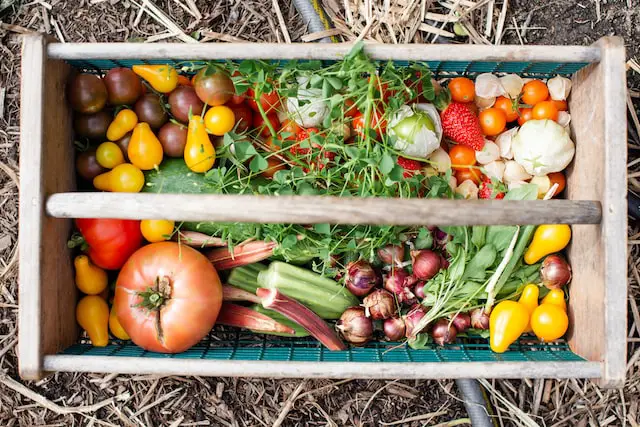
The best 10 vegetables to plant in Michigan, taking into consideration the local climate and growing conditions, are:
- Tomatoes – A popular and versatile vegetable that thrives in Michigan summers.
- Peppers – Both sweet and hot varieties can be grown successfully.
- Green beans – Bush and pole varieties are well-suited for Michigan gardens.
- Peas – Plant early in the season as they prefer cooler temperatures.
- Lettuce is a cool-season crop that can be grown in spring and fall.
- Cucumbers – Opt for bush or vine varieties to suit your garden’s space.
- Zucchini – A prolific producer that can be harvested throughout the summer.
- Carrots – A hardy root vegetable that grows well in Michigan’s soil.
- Beets – Another root vegetable that can be planted in spring and fall.
- Kale is a hardy leafy green that can tolerate cool and warm temperatures.
Remember that Michigan’s growing season may vary depending on your location, so consult local planting guides for the best times to sow and transplant each vegetable.
FAQ About Starting A Vegetable Garden In Michigan
When is the best time to plant a vegetable garden in Michigan?
As a gardener, I can tell you that the best time to plant a vegetable garden in Michigan depends on the specific vegetables you want to grow, as well as your local climate and frost dates. Generally, you can start planting cool-season vegetables, such as peas, lettuce, spinach, and radishes, as early as late March to mid-April, depending on the last frost date in your area. These vegetables can tolerate cooler temperatures and even light frost.
For warm-season vegetables like tomatoes, peppers, cucumbers, and zucchini, wait until the danger of frost has passed, usually around late May to early June. These plants require warmer temperatures and can be damaged by frost.
It’s essential to consult a local planting calendar or your region’s cooperative extension office to determine the most accurate planting times for your specific location in Michigan. Keep in mind that the state’s weather can be quite variable, so always be prepared to protect your plants from unexpected frost or cold snaps.
Final Thoughts on Starting a Vegetable Garden in Michigan
These are the basics you need to know to get a good start on your vegetable garden. However, there is much more to it, and patience is the key.
Discover more from Thumbwind
Subscribe to get the latest posts sent to your email.

